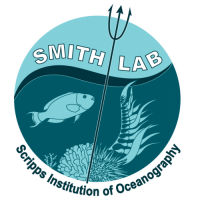A Gathering of Researchers

Sixteen scientists from three continents and one island are gathering in the Northern Line Islands with one purpose in mind—to increase our understanding of coral reef health and decline. Coral reefs are not only extraordinary in their beauty, but also mind-boggling in their complexity. When the corals die and a reef declines, many possible killers come to mind: overfishing, disease-causing microbes, or overfed algae, to name just three prime suspects, all aided and abetted by humans. The goal is to identify the primary factors, to understand how they interact and impact reef health, and ultimately to find a way for humans and reefs to thrive together.

The expedition researchers include three teams, each focused on a particular portion of the teeming reef life, each with their research hypotheses and planned experiments, each led by a veteran of previous expeditions. The Benthic Team led by Jen Smith focuses on the benthos—those organisms that live on the seabed, including the corals and the algae. Interactions between these two groups are important for the fate of the reefs. Stuart Sandin leads the Fish Team that is studying how the effects of fishing, especially the removal of sharks and other top predators, reverberates through the entire reef ecosystem. The third team, the Microbe Team, is piloted by Forest Rohwer. Thought too small to be seen, the microbes are the most numerous and most diverse organisms on the reefs, and perhaps the most important for reef health.
Their research plans for the current expedition grew out of their findings from the 2005 Line Islands Expedition. On that trip they surveyed the fish, the benthos (corals and algae), and the microbes at four atolls in the Northern Line Islands. They sampled the pristine reef at uninhabited Kingman Reef, the degraded reefs found near settlements on Christmas Atoll, and two atolls in between. The differences they found were striking. At Kingman there were lots of large fish (including large predators like sharks), abundant healthy coral, little algae, and few pathogenic microbes. The scene was just the reverse at Christmas—no sharks, many dead or diseased corals, luxuriant algae, and ten times as many microbial pathogens. Just what is it that humans are doing to cause such devastation?
To answer that question, and many others, they are returning to the area, this time adding two more atolls to their itinerary. To see what they have planned for the intense weeks ahead, visit The Science page.

